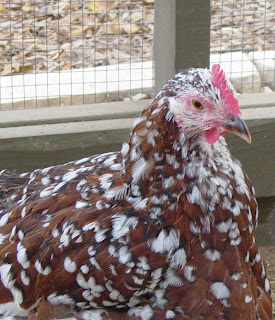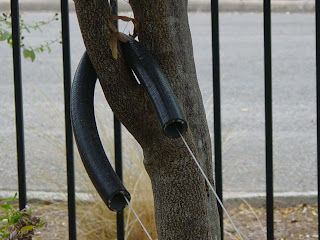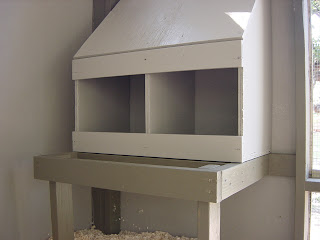In the world of the chicken, the pecking order is very literal. Chickens at the top of the pecking order do all the pecking, and chickens at the bottom of the pecking order get pecked. Sometimes the pecks are gentle reminders that those with privilege can belly up to the feeder at the choice location. Other times the pecks must strike a nerve, because noisy scuffles erupt as the peck-ee decides to fight back.
Here's the chickens in pecking order...
Ginger is a golden sexlink. She is the head chick and has been since day one. A once benevolent queen, Ginger has been a little cranky this summer, pecking her sisters in a most unfriendly way. I’m hoping it’s just the heat, and once the weather cools down, she will chill out (so to speak).
Dottie is a silver laced wyandotte. She is Ginger’s lieutenant and right-hand chick. Dottie is the most handsome chicken in flock with lovely feather coloration and a plump figure. She sternly watches over the coop for any signs of trouble, but seems to let Ginger handle any needed discipline.
Cocoa is a cuckoo moran who was a late comer to our flock. She was a replacement for Dottie’s sister, Wynnie, who we think died of egg impaction. Cocoa is a scrappy chick, who has fought her way up the pecking order with pure determination. She really thinks she is in charge, until Ginger reminds her differently. Those reminders have cost her a few neck feathers lately.
Pansy and Petunia are my middle children (I mean chickens). They are welsummers, which are known for their dark terracotta colored eggs. Petunia was the first and only chicken so far to become broody. A broody hen experiences an overwhelming need to sit on eggs until they hatch. She stops laying eggs herself, refuses to leave the nest, and eats and drinks very little. Petunia has actually been broody twice. Poor thing wants to hatch some babies, but without a rooster there’s not much chance of that happening.
Last but not least is Barnie, so named because she is a barnevelder. Normally, a very attractive breed, Barnie has always been a bit of an ugly duckling. She has a very large crop goiter, but still manages to get around. Since the beginning, Barnie has been at the bottom of the pecking order. She doesn’t seem to mind and actually seems to prefer people over chickens.
In the picture below, Barnie has dug out a hole for a dust bath. Unfortunately, she didn't get to enjoy it. Once the other chickens saw what she was doing, she was forced out of her hole and the others scrabbled for hole privileges. Thus is the life of those at the bottom of the pecking order.
"It's okay Barnie, I'll get you a special treat later."
The gang of six enjoying a few fresh black-eyed peas from the garden.






























































